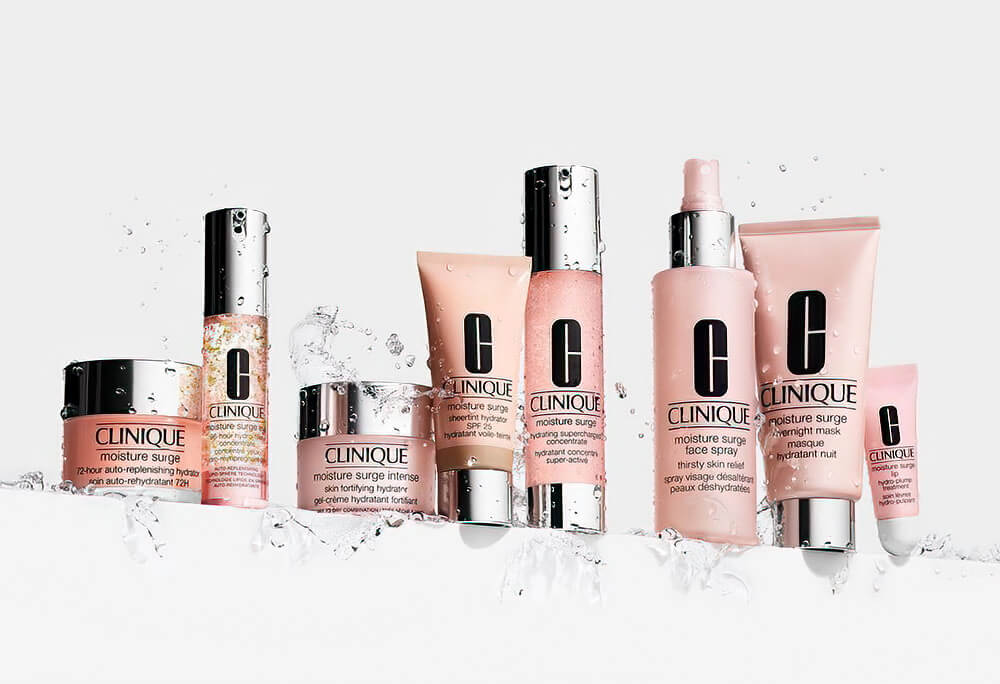Building Brand Trust: The Importance of Authenticity in Commercial Photography
Imagine walking through your favourite shops, surrounded by the comforting noise of the high street. You spot a display that grabs your attention. What catches your eye is the honest story told through the image. It feels genuine, echoing authenticity not as a buzzword but as a foundation for authentic connection. This moment stands out because it’s authentic and relatable. Brands aim to garner trust and credibility. They do it not with flashy images but through real moments that foster a sense of belonging.
Thinking of a brand as a friend might seem strange, but it works. Trust in a brand builds on honesty and dependability. With authenticity leading the way, trust becomes more than an idea. It comes alive in experiences that touch our hearts and minds. In this space, a brand does more than sell. It tells stories that stay with us, forging a lasting bond.
Key Takeaways
- Brand authenticity is crucial for creating a lasting impression with consumers.
- A genuine connection with your audience is fuelled by transparent and honest imagery.
- Trust and credibility are the cornerstone of any successful brand.
- A relationship grounded in authenticity encourages customer loyalty and advocacy.
- Consistent and authentic marketing strategies can elevate a brand above its competitors.
- Building trust and credibility through commercial photography can turn first-time buyers into lifetime supporters.
Unlocking the Power of Authenticity in Branding
Today, connecting genuinely with your audience is key. Trust in your brand relies on faithful adherence to your core values. This includes being transparent and building an actual emotional link with your customers.
The essence of this strategy is your brand’s realness, acting as a quiet envoy. It showcases your integrity not just online but offline, too. It’s not just about selling a product. Instead, it’s about connecting personally and earning loyalty through credibility.
Defining Brand Authenticity in the Digital Age
To connect with your audience, consider what your brand stands for. Your core values are vital and must be clear in all you do. Authenticity means being honest, reliable, and respectful to everyone.
Being authentic isn’t just a tactic; it’s about fostering trust. You do this by staying true to your beliefs and treating customers like real people.

Why Consistency Fosters Trust and Loyalty
Think of your brand as a friend to your customers. To keep this friendship strong, you need to be consistent. This applies to your messaging, your tone, and how you present yourself visually.
Consistency creates a familiar feeling, which builds trust. Trust leads to loyal customers who are ready to support you fully.
Building Long-Term Relationships Through Genuine Connections
Your brand is more than a business for your customers; it could be a part of their daily lives. When they trust your authenticity, they invest in a relationship with shared beliefs. That’s why making a genuine connection is essential—it’s the bedrock of keeping customers, earning their loyalty, and enhancing your brand’s credibility and growth.
Surviving in today’s market means acting in line with your brand’s values at every turn. This realness will ensure your brand’s endurance and growth through honest customer connections.
Creating Compelling Narratives with Honest Imagery
Visual stories are crucial to sharing your brand’s message in commercial photography. They help build trust with your audience. By sharing true stories that match your brand, you can bring people closer to your products or services. Learn how to use genuine imagery to reflect your brand’s values.
The Role of Visual Storytelling in Establishing Trust
Picture a story that doesn’t just show your products but also shares your values. This is how to build trust with pictures. It connects deeper, beyond just looking at what you sell. True stories in photos make your brand seem more reliable, making customers believe in you.
Staying True to Your Brand’s Core Values in Photography
Your photos should echo your brand’s true nature, not just your products. This shows your audience they can trust what they see. Being honest in your photos proves you respect your audience. It also shows your brand is genuine and reliable.
| Visual Storytelling Element | Brand Identity Reflection | Trust Factors |
|---|---|---|
| Imagery | Aligns with brand aesthetics and values | Creates relatable visuals that enhance credibility |
| Tone & Mood | Embodies the brand’s personality | Evokes appropriate emotional responses |
| Context | Tells a story relevant to the brand’s message | Builds an authentic backdrop for the narrative |
| Creativity | Reinforces the unique aspects of the brand | Engages the audience with original concepts |
Understanding the Impact of Influencers on Brand Perception
In today’s online world, influencer relationships change how we see brands. These influencers are like modern-day champions for brands. They show their followers actual social proof. Working with these influencers helps improve brand advocacy. It also leads to meaningful social interactions. This makes people see your brand in a good light.
Influencers making tutorials and product videos have created new ways for people to connect with brands. They offer a trust and relatability that regular ads often miss. When you work with influencers who share your brand’s values, you create genuine connections and support.
- Influencers as Brand Advocates: Influencers play a significant role in shaping opinions and starting conversations, making them strong allies in making your brand seem authentic.
- Authenticity through Social Proof: Influencers giving their approval acts as social proof. It reassures potential customers about your brand’s quality.
- Engagement via Tutorials and Product Videos: Tutorials and reviews from trusted influencers can profoundly influence what people buy.
- Brand Perception through Social Interactions: Talks influencers have with their followers can change or improve how the public views your brand.
Think about how an influencer’s tutorial boosts your brand’s image. It’s not just the tutorial that counts. The key is the influencer’s realness and approachability. Influencers have become vital partners in telling your brand’s story.
Not all influencer partnerships are equally successful. Picking the right people—those in tune with your brand’s spirit and who can sincerely share your message—is essential. This can make your brand stand out. It fosters strong brand advocacy.
Engage, empower, and build lasting relationships with ambassadors who embody your brand’s honesty. This strengthens your brand’s credibility in the market.
We aim to use these partnerships to tell a consistent and trustworthy brand story. How influencers interact with their audience dramatically affects how people view your brand. They are significant in being authentic, supportive champions for your cause.
Leveraging Personalization to Enhance Brand Credibility
Data-driven marketing has changed how businesses communicate with their customers. Using first-party data, businesses can create customer-centric personalized experiences that boost brand credibility.
Making the Most of First-Party Data for a Personal Touch
In the world of personalization, the details matter. By using first-party data well, you can give bespoke product recommendations. These are aimed at the unique tastes and needs of each customer. It goes beyond just using their name. It involves understanding their past choices to create personalized experiences that stand out.

Fostering Trust Through Tailored Customer Experiences
Targeted promotions are significant. They build trust when tailored to what the customer likes and has done before. This trust grows when customers feel noticed through personalized experiences just for them. This careful strategy strengthens the bond with your customers, boosting your brand’s credibility.
“Personalization is not about selling; it’s about building a conversation and sharing a journey with your customer, tailored to their individual narrative.”
| Strategy | Benefits |
|---|---|
| First-party Data Utilisation | Accurate targeting, Increased customer engagement |
| Bespoke Product Recommendations | Higher conversion rates, Enhanced customer loyalty |
| Customer-Centric Targeted Promotions | Improved ROI, Elevated brand perception |
By focusing on personalization, you do more than just better the customer experience. You weave brand credibility into your market identity. Use your first-party data well. Make every customer interaction a moment showing you’re a trustworthy, customer-first brand.
Embracing Transparency Across All Platforms
In our digital world, access to information is easy with just a click. Transparency is vital for an authentic brand. You’re more likely to trust brands that are open about their workings and beliefs. Let’s explore how transparency strengthens your brand story and builds consumer trust.
Behind-the-Scenes Content That Builds a Foundation of Trust
Showing the inner workings of your business helps you connect with your audience personally. It’s not only about the final product but also about celebrating the path to it. Revealing your process shows your brand’s true self, telling customers they have nothing to worry about. This approach increases consumer trust.
How Transparency Elevates Brand Messaging
Brand transparency is about the clearness of your offerings and your brand’s values. It involves honest communication and owning up to mistakes as much as celebrating wins. This honesty makes customers more likely to become loyal supporters who appreciate and spread your dedication to authenticity.
Being transparent on all fronts can significantly improve how customers see your brand. Remember, working on being an authentic brand and sharing true stories strengthens consumers’ trust in you. It sets you apart from rivals and resonates with the values of today’s critical customers.
Aligning Internal Culture with External Brand Identity
Understanding the link between company culture and brand identity is critical to a thriving business. A company’s beliefs should be reflected by its people, making the brand more convincing and authentic.
Creating a story that connects employee engagement with brand identity is essential. It allows for an authentic brand narrative that feels real inside the company and to the outside world. Thus, internal communication isn’t just about memos. It’s about building a culture that matches your brand’s public image.
When your employees are aligned with your brand’s vision and values, they inherently become your most loyal ambassadors, carrying your brand’s narrative forward with authenticity and conviction.
Take Cult Beauty’s ‘Can’t (Re)Touch This’ policy, for example. It’s not only a customer promise but also requires building a company culture of honesty.
| Internal Influence | External Perception |
|---|---|
| Transparent leadership and open communication | The brand seen as trustworthy and inclusive |
| Employee advocacy and engagement programs | Increases brand credibility and multiplies outreach |
| Culture of accountability and ownership | Enhanced customer service and brand loyalty |
| The training focused on brand values | Consistent brand experience and messaging |
Aligning your internal culture with the brand’s public image is crucial. It’s not just for leaders to think about; it’s at the heart of customer trust. When every team member embodies the brand story, they all become true brand advocates.

Every interaction your staff has with the public showcases your brand’s values. For your story to be genuine, it must first be accurate within your company. This is the essence of a brand identity that captures hearts, inside and outside.
Mobilising Social Responsibility as a Pillar of Authenticity
In today’s market, brand trust is essential. It’s more than a business asset; it’s the cornerstone of lasting success. This trust is built not only on products or marketing tactics. It also grows from a commitment to social responsibility and community involvement. Such genuine connections demonstrate your brand’s values and foster deep, meaningful relationships with your audience.
This strategy’s heart is the promise of making a positive social impact. This promise is shown in the way a brand interacts with its community. It goes beyond charity—creating a culture of love and concern for societal welfare. When a brand engages with its community, it nurtures a strong bond.
How Community Engagement Strengthens Brand Trust
Linking your brand to meaningful community projects gives people a solid reason to trust you. This boosts brand trust, as customers see your dedication to social improvements. Whether volunteering, partnering with charities, or supporting local causes, these actions show your business cares. They prove your company is actively contributing to the social fabric.
Brand Love: The Intersection of Affinity and Social Impact
Brand love grows from repeated, heartfelt interactions that touch your audience. It flourishes at the crossroads of affinity and social responsibility. Here, deep emotional bonds are formed. These bonds create loyal consumers who support your brand’s values, not just its products or services.
| Brand Initiative | Impact on Community | Effect on Brand Trust | Contribution to Brand Love |
|---|---|---|---|
| Charitable Partnerships | Supporting local charities aligned with brand values | Increased perception of authenticity and reliability | Deeper emotional connection with the brand’s philanthropic approach |
| Environmentally Conscious Operations | Reduced carbon footprint and sustainability initiatives | Enforcement of the brand’s dedication to future generations | Alignment with customers’ environmental values fostering respect |
| Advocacy and Activism | Progressive change promoted through brand voice | More tremendous respect for the brand’s leadership and ethical standpoints | Cultivation of a passionate following that shares similar ideals |
Remember to weave in social responsibility as you shape your brand’s identity. Doing so is more than a marketing strategy—it firmly establishes your brand in your customers’ hearts and minds. It shows you care about profit and making a real difference.
The Crucial Role of Authenticity in Commercial Photography
Building brand trust is critical for a successful business today. Showing accurate, authentic images enhances a brand’s reputation and reliability. When people see accurate and precise photos, it does more than grab their attention. It earns their loyalty.
Authentic connections with customers are vital in today’s market, and using authentic images is a powerful way to build these connections. Every photo tells a story, and making sure this story matches your brand’s values strengthens your message. The importance of authenticity in commercial photography cannot be ignored. It either boosts or weakens customer trust in your brand.

Here is a comparison of authentic versus stock photography. It shows how authenticity in commercial photography can foster brand trust.
| Aspect | Authentic Photography | Stock Photography |
|---|---|---|
| Connection with Viewer | Creates a personal, emotional connection | It can feel generic and distant |
| Brand Message | It makes the brand more credible and relevant | It may not align well with the brand’s message |
| Consumer Trust | Builds trust with realistic scenarios | Impersonal images might not connect well |
| Visual Appeal | It is unique and stands out | It can be too familiar, causing boredom |
Today’s customers are pickier and prefer genuine brands. By using authenticity in commercial photography, you show your brand as a partner in their journey—a partner that shares and reflects their values.
In summary, thriving in today’s market means building brand trust with genuine strategies. The role of natural photography is vital. It acts as a visual handshake that says, “We’re real, just like you.”
Utilising User-Generated Content to Showcase Real Connection
In digital marketing, user-generated content (UGC) is critical to authenticity and trust. Your customers become part of your story, sharing their views and making your brand more believable. Let’s look at how UGC can help people connect with your brand more.
The Value of Customer Voices in Amplifying Trustworthiness
Picture a marketplace where honest customer feedback means more than the brand’s words. UGC’s power is in its true stories. Seeing genuine life stories makes others believe in your brand. They trust what they see from others like them.
These stories, from online reviews to social media sharing, help others feel sure. They trust these voices, seeing them as genuine signs of quality.
User Perspectives: Bringing Brand Authenticity to Life
User content adds a special touch—every photo, video, and review shares a real story. By sharing these authentic experiences, your brand shows it listens and cares. It makes your brand feel more human and builds a strong community.
Using UGC in your strategy makes your brand look better and boosts engagement. People love seeing their content celebrated. It sparks more involvement, giving everyone a chance to speak. This is how you create a genuine connection.
By sharing your customers’ unique stories, your brand is truly authentic and trustworthy. So, use your customers’ voices to make your brand feel more natural and trusted. Why not let your loyal customers bring your brand to life?
Conclusion
In the world of commercial photography, building brand trust is critical. People look for realness, and you must provide it. Remember, brand authenticity is vital as it’s the base of your customer relationship. It influences your campaign messages and the visuals that showcase your principles. This deep connection changes casual viewers into loyal customers.
Your brand must be honest at every customer interaction to make your mark. Aligning your words and pictures shows the true you. This doesn’t just create an image but a reliable reputation. You start building meaningful customer relationships through a meaningful photograph or story. This is where trust starts, and your legacy begins to grow.
When planning your next campaign, think about how you show your brand. Choosing the right lens can enhance trust and showcase products. Be faithful in every photo; you’ll capture more than just a scene. You’ll catch the heart of long-lasting bonds. This invites emotional connection and lifts your brand higher. In a world valuing authenticity, your wise investment will make your brand thrive.
FAQ’s
Q: What is the importance of brand authenticity in commercial photography?
A: Brand authenticity is crucial in commercial photography as it helps build trust and loyalty with the target audience. It creates a sense of transparency and authenticity essential for connecting with the audience on a deeper level.
Q: How does building brand authenticity differentiate a brand from its competitors?
A: By focusing on building brand authenticity, a brand sets itself apart from competitors by showcasing its unique identity and purpose across all touchpoints. This helps create a strong bond with customers who trust the brand and its values.
Q: Why is authenticity important in digital marketing an
Q: What is brand authenticity, and why is it important in commercial photography?
A: Brand authenticity refers to the genuine and honest representation of a brand’s identity, values, and purpose. It is crucial in commercial photography as it helps build trust and loyalty with the target audience, creates a sense of authenticity, and sets the brand apart from competitors.
Q: How does brand authenticity matter in digital marketing?
A: Brand authenticity matters in digital marketing. It allows businesses to connect with their audience deeper, build trust and loyalty, and differentiate themselves in a crowded market. It also helps create a solid social media presence across all touchpoints.
Q: What role does personal brand play in building brand authenticity?
A: Personal brand plays a significant role in building brand authenticity as it reflects the values and personality of the individuals behind it. Businesses can create a unique and authentic brand identity by aligning personal branding with the brand’s values.
Q: How can businesses learn how to build brand authenticity?
A: Businesses can learn how to build brand authenticity by staying true to their brand’s purpose, values, and mission. By demonstrating transparency and authenticity in their communication, actions, and products, businesses can earn the trust of their target audience.
Q: Why is authenticity essential for creating a sense of trust and loyalty with customers?
A: Authenticity is essential for creating a sense of trust and loyalty with customers because it helps build credibility, reliability, and emotional connections. Customers are more likely to trust the brand and remain loyal when they perceive it as genuine and transparent.
Q: How can authenticity differentiate a brand in the competitive business and marketing landscape?
A: Brand authenticity can set a brand apart in the competitive landscape by showcasing its unique values, purpose, and commitment to authenticity. It helps the brand stand out, resonate with the target audience, and differentiate itself from competitors.
Q: What are the critical elements for building trust through brand authenticity?
A: The key elements for building trust through brand authenticity include consistent messaging, genuine interactions, customer testimonials, ethical practices, and demonstrating the brand’s values and purpose. These elements help in establishing a solid foundation of trust with the audience.
Q: How can commercial photography help in creating an authentic brand image?
A: Commercial photography plays a vital role in creating a brand’s authenticity by visually representing its values, purpose, and unique identity. It helps showcase the brand’s story and connect with the audience emotionally.
Q: How do you learn how to build brand authenticity through photography?
A: To build brand authenticity through photography, one can focus on capturing genuine moments, showcasing fundamental interactions, and staying true to the brand’s values and purpose. Collaborating with brand advocates or influencers can also help create an authentic image.
Q: How does brand authenticity contribute to the success of a business?
A: Brand authenticity matters as it helps create a solid brand presence, foster customer loyalty, and attract a loyal customer base. Customers who trust and perceive the brand as authentic are likelier to engage with its products or services.
Q: Why is creating a personal brand important in establishing authenticity?
A: Creating a personal brand is essential as it allows individuals to build trust and authenticity with their audience. It helps showcase one’s unique identity, values, and expertise for connecting with followers or customers.








